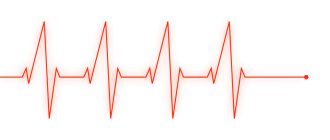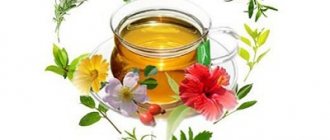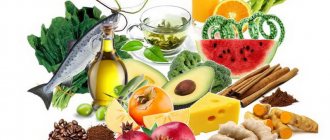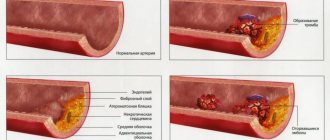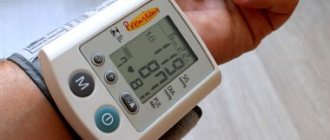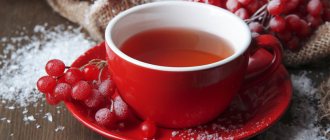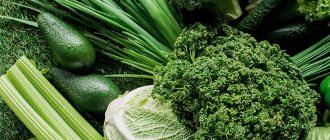During a hospital stay, treatment of a patient with a heart attack should consist of strict adherence to all doctor's recommendations. Folk and home remedies are not able to help during this period and, moreover, they are strictly prohibited. It is better to postpone them until later, for the period after discharge from the hospital. From the moment the patient is at home, a fairly long period of rehabilitation begins, during which medical prescriptions can be supplemented with folk remedies. However, is such an addition to therapy advisable?
Classification of heart attack
There are several classifications of the disease.
By stages of development there are:
First stage heart attack . This is the stage of the onset of myocardial damage. From the appearance of the first signs of a heart attack to the beginning of the death of part of the heart muscle, 15-120 minutes pass.
Second stage heart attack . This is an acute period of the disease, which lasts from two to ten days.
Stage three heart attack . Subacute form of the disease. Lasts 7-28 days.
Stage four heart attack . This is a period of scarring during which the heart adapts to continue working despite the tissue damaged by the scar. Complete scar formation lasts 3-5 months.
Based on the size of the lesion, a heart attack can be:
- small-focal – a small part of the heart muscle is affected;
- macrofocal - tissue necrosis is observed throughout the myocardium.
Depending on the frequency of development, a heart attack can be:
- primary;
- recurrent (occurs within two months after the first incident);
- repeated (occurs more than two months after the first heart attack).
Based on the depth of damage to the heart muscle, the following types of infarction are distinguished:
- subepicardial – the outer lining of the heart is affected;
- subendocardial - the inner lining of the heart is affected;
- intramural – the entire myocardium is affected;
- transmural – through-and-through myocardial damage is observed.
Depending on the presence of complications, a heart attack can be uncomplicated or complicated.
according to location :
- right ventricle;
- left ventricle.
By location of pain:
- Typical form. Pain occurs in the chest.
- Atypical forms:
- painless;
- abdominal (abdominal pain, vomiting, nausea occur, the clinical picture resembles gastrointestinal pathologies);
- edematous (swelling appears throughout the body);
- arrhythmic (tachycardia appears, heart rhythm fails);
- cerebral (headache, impaired consciousness, dizziness);
- asthmatic (cyanosis of the mucous membranes and skin, shortness of breath, suffocation, symptoms reminiscent of respiratory diseases).
Treatment with cereals
The grain of almost any cereal, especially whole grain, contains a high percentage of proteins, amino acids, including essential ones, fiber, vitamins A, group B, C. However, during the germination period their amount becomes even higher. It is this fact that makes sprouted grains so useful both for everyday use and during the recovery period after myocardial infarction.
It is quite possible to germinate grain at home. Typically wheat, rye and barley are used for this. Before germination, the grain is disinfected with a 0.25% solution of potassium permanganate, then with boiling water. Fill a small glass jar (0.25 - 0.5 liters) 2/3 full with grain and top up with purified water. The grain absorbs water and swells. After 10 - 12 hours, the remaining water is drained, and the grain is distributed in an even layer on a glass, plastic or enamel tray, covered with 4 layers of water-soaked gauze. The top layer of grain is also covered with four layers of gauze, generously moistened with water.
After 2 days, when the sprouts reach a length of approximately 1 centimeter, the grain is washed with running water and eaten. This product does not require any additional cooking. Sprouted grain can be consumed either in its “pure” form or added to porridge, vegetable salads or any other dishes.
Causes of heart attack
A heart attack occurs when blood flow in the coronary artery is suddenly disrupted, blood stops flowing into the myocardium and part of it begins to die. The most common cause of blood flow disturbance is thromboembolism, which occurs against the background of atherosclerosis.
In rare cases, a heart attack is a complication of any other pathological conditions of the body (infectious endocarditis, trauma and abnormal development of the coronary arteries, and a number of others).
There are a number of factors that can trigger the development of the disease. These include:
- high blood pressure;
- hyperlipoproteinemia;
- sedentary lifestyle;
- unhealthy diet leading to the development of obesity;
- age - the likelihood of a heart attack increases in people over 55 years of age;
- diabetes;
- bad habits;
- male gender;
- hereditary predisposition - if close relatives have been diagnosed with a heart attack or ischemic heart disease, this increases the risk of developing the disease.
Treatment of myocardial infarction with folk remedies Traditional medicine for the treatment of myocardial infarction
Myocardial infarction is a disease caused by damage to the heart muscle - myocardium - due to blockage of the coronary artery or one of its branches. Complete blockage of an artery can occur as a result of atherosclerosis, the formation of a blood clot, or the release of a piece of cholesterol plaque that becomes lodged in the artery. The portion of the heart muscle served by this artery is deprived of oxygen and nutrients, causing it to weaken or die, a process known as a heart attack. In most cases, myocardial infarction causes severe pain, similar to that of coronary artery disease; however, some people experience mild heart attacks without knowing it or simply not paying attention to their symptoms. Symptoms of myocardial infarction: Suffocating pain during myocardial infarction usually begins suddenly, it does not go away after resting or taking medications and gets worse all the time. These attacks are not always associated with physical tension or stress, as with coronary artery disease; they often occur during rest or even sleep. Other symptoms include difficulty breathing, dizziness, nausea and/or vomiting, pale skin and cold sweats. Treatment of myocardial infarction: Traditional methods of treatment of myocardial infarction Myocardial infarction requires immediate treatment. If treatment is not started within the first hours after the onset of heart attack symptoms, irreversible damage to the heart muscle may occur. Prompt treatment can prevent or minimize the extent of chronic heart damage. Medicines that dissolve the blood clot or a small balloon inserted into the blocked area of the coronary artery can clear the blocked artery and thereby restore blood supply to the affected area. Regardless of the situation and treatment regimen, the first hours and days after a heart attack are critical and require intensive treatment. With extensive myocardial infarction, death can occur despite treatment.
Non-traditional and traditional methods of treating myocardial infarction All of the following remedies are recommended for use after a heart attack during the rehabilitation period. ● Grind 1 kg of cranberries and 200 g of garlic in a meat grinder, add 100 g of honey, mix and leave for 3 days. Take 1 dessert spoon 2 times a day before meals.
● Mix freshly squeezed onion juice with honey in equal proportions. Take 1 tablespoon 2-3 times a day.
● Pour 300 ml of warm boiled water over 2 - 3 chopped onions, leave for 7-8 hours, strain. Drink 0.5 cups of infusion before meals.
● Mix 1 kg of chokeberry with 2 kg of honey. Take the mixture 1 tablespoon per day.
● Chew lemon zest: it is rich in essential oils and improves heart function.
● Apples help remove toxins from the body and strengthen the walls of blood vessels.
● Eat 100-150 g of dried apricots per day.
● Eat 1 tablespoon of honey 3 times a day, you can dilute it in 1 glass of warm water or eat it with fruit. Honey has a beneficial effect on the heart muscle, dilates the blood vessels of the heart, and improves its blood supply.
● Crush 100 g of walnut kernels and mix with 2 tablespoons of buckwheat honey. Eat 1 day in 3 doses. Walnut kernels contain magnesium, which has a vasodilator and diuretic effect, as well as potassium, which removes sodium from the body; a lot of iron, copper, cobalt, zinc and vitamin B12, which are necessary for the formation of red blood cells.
● Bitter almonds are considered a good remedy for heart attacks. It is recommended to consume 1 nut per day.
● Take 1 kg of honey, 10 lemons, 5 heads of garlic. Squeeze juice from lemons, add grated garlic and honey. Mix everything and leave for 1 week.
● Take 1 teaspoon 1 time per day. Especially recommended for angina pectoris with severe shortness of breath.
● Take 20 g of ginseng root and 0.5 kg of bee honey. Mix the root powder with honey and leave for 1 week, stirring frequently. Take 0.25 teaspoon 3 times a day (especially good for those who have low hemoglobin in the blood).
● Pour 100 g of wheat grains with water and place in a warm place. When sprouts 1 mm long appear, rinse and mince, add vegetable oil, honey and other ingredients to taste (raisins, prunes). Eat this portion in the morning on an empty stomach.
● Dissolve 0.2 g of mumiyo in 1 glass of rosehip decoction. Drink in 2 doses - morning and evening. The course of treatment is 10 days.
● Prepare a cardiovascular elixir. To do this, take: 0.5 kg of honey (better than May honey), 0.5 liters of 70% medical alcohol, motherwort herb, cudweed herb, knotweed herb, chamomile flowers, rhizome with valerian roots, hawthorn fruits. Mix honey and alcohol and heat over very low heat (stirring constantly) until foam forms. Then remove from heat and let stand. Separately, in a thermos in 1 liter of boiling water, infuse the herbs: 1 tablespoon of each herb powder. Leave for 2 hours, strain and mix with the first mixture. The first week, take 1 teaspoon in the morning and evening, starting from the second week, switch to 1 tablespoon. After the medicine runs out, take a break for 10 days and repeat the course. This elixir is recommended for atherosclerosis, angina, hypertension, ischemia.
● Pour 30 g of grated propolis with 96% alcohol, leave in a dark place for 1 week (necessarily at room temperature, since propolis loses its properties when cooled), shaking the contents periodically, strain. Store in a dark place. Grind the garlic into a pulp, pour 200 g of the pulp into 100 ml of 96% alcohol, leave in a dark, cool place for 10 days, shaking the contents periodically, strain, squeeze out the rest, leave again for 4 days, then carefully strain off the settled tincture. Add 2 tablespoons of honey and 10 ml of propolis tincture to the tincture, mix thoroughly. Take 30 minutes before meals, diluting the tincture in 1 spoon of warm water or milk, as follows: on the first day for breakfast - 1 drop, for lunch - 2, dinner - 3 drops. The next day: in the morning - 4 drops, in the afternoon - 5, in the evening - 6 drops. So add drop by drop until the fifth day of treatment - in the evening of this day, take 15 drops. On the morning of the sixth day, take 15 drops, then the number of drops is reduced by one until the tenth day: in the evening it should be 1 drop. On the eleventh day, you need to take 25 drops in the morning, afternoon and evening. From the twelfth to the sixteenth day, start taking drops again according to an increasing scheme, that is, in the morning of the twelfth day - 1, in the afternoon - 2, in the evening - 3 drops. On the thirteenth day - 4, 5, 6 drops, respectively, and so on up to 15 drops on the evening of the sixteenth day. Repeat treatment after 6 months.
● Pour 400 g of garlic, ground into a pulp, 3.5 liters of milk, boil in a sealed container over low heat until the liquid evaporates by 0.75 volume, strain. For pain in the heart, take 0.3-0.5 cups in small sips 3-4 times a day before meals. Store in a dark, cool place.
● In the first days of myocardial infarction, it is recommended to drink carrot juice with vegetable oil 2 times a day: 0.5 cups of juice and 1 teaspoon of oil.
● Freshly prepared carrot juice is a good way to restore strength after a heart attack. You can drink it 0.5-1 glass 3 times a day before meals. During the recovery period, it is advisable to combine carrot juice therapy with the use of a weakly concentrated infusion of hawthorn fruits instead of tea.
● Drink 2-4 glasses of birch sap per day.
● Leave freshly squeezed beet juice for 4 hours, mix in equal proportions with honey and take 2 tablespoons 3 times a day. You can also drink beet juice mixed with other juices: carrot, cabbage, potato. Mix radish juice with honey. Take 2 tablespoons 3 times a day before meals.
● Mix beet, carrot, radish and honey juices in equal parts. Take 1 tablespoon 3 times a day 30 minutes before meals. The course of treatment is 3 months.
● Drink 2 - 3 glasses of persimmon juice daily.
● Drink turnip juice with honey. There are turnips in any form.
Herbal medicine for the treatment of myocardial infarction The following preparations should be taken after a myocardial infarction for 6 months, changing them every 2 months. ● Take equal parts of astragalus herb, rhizomes with valerian roots, wild rosemary shoots, calendula flowers, clover flowers, motherwort herb, rose petals, fennel fruits, sandy immortelle flowers, marsh grass, white willow bark. Pour 6 g of the collection into 300 ml of boiling water, leave in a thermos for 6 hours, strain. Take warm, 0.25 cups 4-5 times a day.
● Take equal parts of arnica inflorescences, horse chestnut flowers, cuff leaves, motherwort herbs, fennel fruits, corn silks, coltsfoot leaves, honeydew leaves, and lavender herbs. Pour 5 g of powdered collection into 250 ml of boiling water, leave in a thermos for 4 hours, strain. Take 0.3-0.25 cups 3-4 times a day 1 hour before meals.
● Take equal parts of hawthorn flowers, watch leaf, elecampane rhizome, clover flowers, meadowsweet herb, peppermint leaf, dandelion root, oregano herb, cudweed herb, celandine herb, sage herb. Pour 6 g of powdered collection into 300 ml of boiling water, boil for 2 minutes, leave in a warm place for 2 hours, strain. Take 0.3-0.25 cups warm after meals.
● Take equal parts of hawthorn fruits, rhizome with valerian roots, sweet clover herb, clover flowers, meadowsweet herb, lemon balm leaf, rose petals, fireweed leaf. Pour 5 g of powdered collection into 250 ml of water and heat in a water bath in a sealed container (do not boil) for 15 minutes. Leave in a warm place for 2 hours, strain. Take 0.25 cups 4 times a day between meals.
● Take 2 parts each of hawthorn flowers, watch leaf, sweet clover herb, the whole strawberry plant, 1 part each of calendula flowers, peppermint leaf, dill seeds, and honey leaf. Pour 6 g of the collection into 300 ml of boiling water, heat in a water bath for 10 minutes, leave in a warm place for 1 hour, strain. Take warm, 0.3 cups 3 times a day, 20 minutes before meals.
● Take equal parts of rose hips, red rowan fruits, hawthorn fruits, viburnum fruits, raisins and dried apricots. Pour 1 liter of boiling water into 1 glass of the mixture and leave for 1 night in a thermos. Drink everything during the day instead of tea. This infusion can be taken for a long time.
● Take equal parts of hawthorn flowers, calendula flowers, dill fruits, oat straw, linden flowers. Pour 5 g of powdered collection into 250 ml of boiling water, leave in a warm place (in a thermos) for 3 hours, strain. Take 50 ml warm 3-4 times a day 30 minutes before meals.
● Take equal parts of hawthorn fruits, clover flowers, fennel fruits, white willow bark, St. John's wort herb. Pour 5 g of the collection into 250 ml of boiling water, heat in a water bath for 10 minutes, leave in a warm place for 1 hour, strain. Take the entire infusion 3 times warm, the last dose 1 hour before bedtime.
● Take in equal parts a leaf of watch, a leaf of lemon balm, a leaf of snot, and the fruits of rowan. Pour 4 g of the collection into 250 ml of boiling water, boil for 2 minutes, leave in a warm place for 2 hours, strain. Take the entire infusion 3 times, regardless of meals. ● Take equal parts of arnica inflorescences, watch leaf, sweet clover herb, lily of the valley flowers, peppermint leaf, dill fruits, rose hips, wormwood herb. Pour 6 g of the collection into 300 ml of boiling water, leave in a thermos for 6 hours, strain. Take warm, 0.25 cups 4-5 times a day.
● Take in equal parts the fruits of hawthorn, the whole strawberry plant, meadowsweet grass, honey leaf, celandine grass, fireweed leaf, rue grass, viburnum flowers. Pour 6 g of powdered collection into 300 ml of boiling water, boil for 2 minutes, leave in a warm place for 2 hours, strain. Take 0.3-0.25 cups warm after meals.
Therapeutic exercises after myocardial infarction
● A set of exercises for patients who have had a heart attack, according to the method of herbalist I.V. Muravov. Exercises in a sitting position: Move your eyes up, down, to the sides. Circular movements of the eyes (left, up, right, down, in the opposite direction). Perform the movements alternately with eyes open and closed, at an average pace, 10 times each. After finishing the exercises, lightly stroke your closed eyes with your fingers and blink several times. Squeeze and unclench your eyelids. 10-15 times at an average pace, with effort. Rotate your head while looking fixedly in front of you in one direction or the other. Perform at an average pace 5-6 times in each direction.
Exercises in a standing position: Starting position (i.p.) arms along the body, legs shoulder-width apart. On the count of 1 - 2, raise your arms up with your palms facing out, stretch and inhale; 3 - lower your hands down, describing a circle with them - exhale; 4 - return to i. p. Perform 4-6 times at an average pace. I. p. - hands on the belt, legs apart, On the count of 1-2 - turn to the left, arms to the sides - inhale; 3-4 - return to i. n. - exhale; 5-8 - the same on the other side. Perform 4-5 times at a slow pace. I. p. - arms along the body, legs shoulder-width apart. On the count of 1-2, sit down without lifting your heels from the floor, leaning forward a little and moving your arms back - exhale; 3-4 - return to i. n. - inhale. Perform 4-6 times at a slow pace. I. p. - arms along the body, legs shoulder-width apart. On the count of 1, squat down with your hands on your hips and exhale; 2 - return to i. n. - inhale. Perform 3-4 times. I. p. - hands on the belt, feet shoulder-width apart. On the count of 1 - bend to the left, raise your right hand up - inhale; 2 - return to i. n. - exhale; 3-4 - the same in the other direction. Perform 3-4 times.
Exercises in a sitting position: I. p. - lean back relaxed on the back of the chair, grab the edges of the seat with your hands, stretch your legs. On the count of 1-2 - bend over, move your head back - inhale; 3-4 - return to i. p. - exhale. Perform 4-6 times. I. p. - grab the edges of the seat with your hands, stretch your legs. On the count of 1, raise your left leg to a horizontal position; 2 - lower your leg; 3-4 - the same with the right foot. Breathing is uniform. Repeat 3-4 times. I. p. - lean back in the chair, raise your arms up, stretch your legs. On the count of 1-2 - bend your left leg and, clasping your shin with your hands, touch your chest with your knee, tilt your head forward - exhale; 3-4 - return to i. n. - inhale; 5-8 - the same, bending the right leg. Perform 3-4 times.
Exercises in a standing position: I. p. - arms along the body, legs shoulder-width apart. On the count of 1, extend your left hand forward; 2-1 - swinging movements of the leg (back and forth); 8 - return to i. n. Do not hold your breath. Perform 3-4 times with each leg. I. p. - arms along the body, legs shoulder-width apart. On the count of 1, extend your left hand forward; 2 - step forward with your right foot, extend your right arm forward; 3 - put your hands to your shoulders (hands clenched into fists); 4 - return to i. P.; 5-8 the same, starting with the right hand and taking a step with the left foot. Perform 3-4 times at an average pace. I. p. - arms along the body, legs shoulder-width apart. Walk in place for 15-20 seconds. Finish the walk with 2-3 breathing exercises.
● A set of exercises for patients who have had a heart attack, according to the method of Professor N. G. Propastin This set of exercises is aimed against repeated heart attacks and is recommended for people under 50 years of age.
Exercises in bed: Starting position (ip) - lying on your back.
Raise your arms up, grabbing the headboard of the bed. Pull yourself up, moving your head back (going deeper into the pillow), straighten your legs, pull your toes. Perform 5-6 times. I. p. - sitting. Moving your arms back, raising your head and straightening your back, squeeze your shoulder blades together. Perform 5-6 times. Exercises in a standing position: I. p. - arms along the body, legs at the width of the feet. On the count of 1-2 - raise your arms up (through the sides or clasped in a “lock” in front of you), rise on your toes, stretch; 3-4 - return to i. p. Perform 4-5 times. I. p. - one hand at the top, the other at the bottom. On each count, change the position of your hands. Perform 8-10 times. I. p. - hands on the belt (you can hold on to the back of the chair with one hand), feet at the width of your feet. Swing your leg back and forth. Perform 4-5 times with each leg. I. p. - hands on the belt, feet shoulder-width apart. On the count of 1-2 - bend forward; 3-4 - return to i. p. Perform 8-10 times. Tilt - exhale, straightening - inhale. I. p. - arms along the body, legs shoulder-width apart. On the count of 1-2, raise your arms up; 3 - lower your arms in arcs downwards, bend your legs slightly; 4-5 - continuing to move your arms back, tilt your torso forward, straighten your legs; 6 - arms begin to move forward, legs bent slightly, torso straightened (half-squat position); 7-8 - raise your arms up in arcs, straighten your legs, pulling yourself up, rise on your toes and return to i. p. Perform 5-6 times. I. p. - straight arms in front of the chest, legs hip-width apart. For each count - jerking movements with straight or bent elbows (possible with a simultaneous half-rotation of the body). Perform 8-10 times. I. p. - hands behind the head, legs together. On count 1, lean to the right while simultaneously lunging with your right foot in the same direction (you can simultaneously stretch your arms up); 2 - return to i. P.; 3 - lean to the left, while simultaneously lunging with your left leg in the same direction; 4 - return to i. p. Perform 4-5 times in each direction. I. p. - arms along the body, legs shoulder-width apart. Squats. The pace is arbitrary. At the moment of squatting, one hand is behind your head, the other on your belt; the next time you squat, change the position of your hands. Perform 8-10 times. I. p. - hands on the belt, feet shoulder-width apart. Circular rotations of the pelvis (left, forward, right, backward). Repeat the same in the other direction. Perform 4-5 times in each direction. I. p. - hands on the belt, legs apart. On the count of 1-2 - spread your arms to the sides and slightly turn your torso to the right - inhale; 3-4 - return to i. p. - exhale. Perform 3-4 times in each direction. I. p. - legs together, hands on the belt. Jump in place. Legs together - apart. Feet together - one leg forward, the other back. Perform for 30-40 seconds. Then go to a fast step. Jogging (in place or around the room). Perform for 5-7 minutes. Calm walking. Breathing exercises for 2-3 minutes.
Symptoms of a heart attack
In most cases, the clinical picture of a heart attack is quite pronounced and characteristic. However, it should be remembered that there are atypical forms of the disease that can manifest themselves in different ways.
The main symptom of a heart attack is severe pain. It is burning, dagger-like, localized behind the sternum, and can radiate to the left arm, shoulder blade, and lower jaw.
Physical activity does not always contribute to the development of a heart attack. Quite often, a heart attack begins at night, at rest. It is necessary to differentiate myocardial infarction from an attack of angina.
Both conditions have a similar clinical picture, but unlike angina, pain during a heart attack does not stop after taking nitroglycerin and persists for more than half an hour. If the above symptoms appear, you must immediately call an ambulance and provide first aid to the patient.
Here are the basic rules, the observance of which can help save a person’s life:
- the patient is placed on a flat surface, the head is slightly raised, a nitroglycerin tablet and an aspirin tablet are given under the tongue, which must be chewed;
- In addition, the patient is given an analgin tablet, 60 drops of valocordin, 2 panangin tablets, and a mustard plaster is placed on the heart area.
Treatment with food
DC
Our usual products also have a therapeutic effect in case of myocardial infarction. Basically, they serve as a source of minerals and vitamins necessary for the restoration of the heart muscle. To recover after a heart attack, vegetable oils, nuts and bee honey are used, which may have the property of slightly dilating blood vessels and improving the nutrition of the heart muscle (although, of course, it is very far from medicine in this regard).
Below we have given several recipes for products based on healthy foods. 100 grams of walnut kernels are crushed and mixed with 2 tablespoons of honey. This amount of mixture is eaten per day in 3 doses. In addition to walnuts, bitter almonds are useful after a heart attack. It is recommended to eat 1 nut per day. 0.5 tablespoon of honey is mixed with the same amount of onion juice. Take 1 tablespoon 2 – 3 times a day. You can simply eat 1 tablespoon of honey without any additives 3 times a day every day.
Diagnosis of heart attack
There are three main indicators on the basis of which the diagnosis of myocardial infarction is made:
- Characteristic symptoms . During a heart attack, the patient experiences severe chest pain that lasts more than 30 minutes and is not relieved by taking nitroglycerin. The patient complains of lack of air, suffocation, cold sweat, sudden weakness, vomiting, nausea, decreased blood pressure, and fear of death.
- Changes in laboratory parameters . The number of cardiomyocytes in the blood increases, which indicates myocardial damage.
- Characteristic changes on the ECG.
Treatment options
Myocardial infarction is a serious disease, against which modern medicine is sometimes powerless. Is it possible to hope to improve the condition of a patient who has had a heart attack using traditional medicine? It is possible if you use them wisely, in a timely manner and do not count on super results.
Medicines used to treat myocardial infarction at home must either have medicinal properties (herbal medicine) or be a source of vitamins and other substances necessary for the full restoration and functioning of the heart muscle (the use of cereals and food). All of these remedies can be considered a useful addition to the main treatment, but it is still better to use them only after consulting a doctor.
Treatment of heart attack (classical medicine)
If a heart attack is suspected, the patient is taken to the intensive care unit for a course of intensive therapy. The following therapeutic measures are carried out in the hospital:
- administering thrombolytic drugs to the patient, which can dissolve a fresh thrombus in the coronary artery and quickly restore blood supply to the myocardium;
- pain relief with narcotic analgesics;
- carrying out antiarrhythmic treatment;
- intravenous administration of nitrates to dilate blood vessels;
- taking medications that prevent thrombosis.
Methods of surgical treatment of infarction - coronary artery bypass grafting and stenting, balloon angioplasty.
Treatment of myocardial infarction with folk remedies
A huge number of people suffer from various ailments of the cardiovascular system. Such pathological conditions most often develop at a fairly mature age, but in some cases they are diagnosed in very young people. One of the most serious illnesses of this type is considered to be myocardial infarction, which can cause death.
Treatment of such a disease should be urgent and carried out exclusively in medical institutions. At the stage of recovery after a heart attack, the patient can use not only medications, but also traditional medicine, having previously discussed the advisability of their use with the attending physician. So, let's consider what folk remedies are recommended by healers for a patient to support himself after a myocardial infarction.
Fees
Various collections are most often prepared for consumption. Let's consider several of the most effective compositions of this type.
Combine five parts hawthorn flowers with three parts bird knotweed and two parts horsetail. Brew a couple of tablespoons of crushed and well-mixed raw materials with four hundred milliliters of boiling water and leave to steep for one hour. Then strain the prepared medicine. It must be consumed in a third of a glass to correct heart weakness.
Combine equal parts of sweet clover and meadowsweet herbs, hawthorn fruits, clover flowers, rose petals, fireweed and lemon balm leaves, as well as valerian roots. Mix all ingredients thoroughly. Combine a tablespoon of the resulting composition with one glass of just boiled water and place in a water bath for a quarter of an hour. Then set the medicine aside and let it sit for one hour. The resulting product must be filtered and taken orally, a third of a glass three or four times a day.
Combine equal amounts of sweet clover herb, dill, oregano and celandine, immortelle flowers, wild rosemary shoots and elecampane roots. Chopped and mixed plant materials need to be brewed with boiling water. You will need one glass of liquid per tablespoon of the mixture. Boil the product over low heat for two to three minutes, then leave for an hour. It is recommended to consume the strained medicine warm in the amount of a quarter glass after a meal.
Mono compounds
When treating myocardial infarction, it will be beneficial to consume hawthorn-based products, which have a positive effect on the activity of the entire cardiovascular system. To prepare the medicine, you will need a tablespoon of the fruits of this plant; they should be brewed with one glass of just boiled water. Infuse the future medicine for half an hour, then strain and consume half a glass in the morning and evening.
Consuming a product based on blackberry leaves has a remarkable effect. To prepare it, you need to combine a couple of tablespoons of crushed plant material with half a liter of just boiled water. Infuse this remedy for two hours, then strain and take with honey. The medicine should be drunk half a glass three or four times a day, and it must be warm.
You can also use grass or wild strawberry rhizomes. A couple of tablespoons of plant material should be boiled in half a liter of boiling water for a quarter of an hour to twenty minutes. The resulting drink should be infused a little, strained and taken half a glass three or four times a day immediately before meals. The medicine should also be warm.
Bee products
Such gifts of nature have a great many useful qualities. They can be used to correct a wide variety of pathological conditions, including helping to cope with myocardial infarction. Excellent results can be achieved by daily consumption of pure propolis. It should be taken orally at four to six grams per day, chewing for a long time. This drug has an excellent effect on the hematopoietic system, slightly dilates the blood vessels in the heart muscle and activates the flow of oxygen to the tissues, optimizing metabolic processes in cells.
High-quality honey has the same properties, but you also need to eat it in minimal quantities - a teaspoon or a tablespoon twice or thrice a day, adding it to milk, cottage cheese or juices.
Cereals
The consumption of sprouted grains has an excellent effect in the treatment of myocardial infarction. For this purpose, it is best to use grains of wheat, rye, and barley. The raw materials must first be shed with a 0.25% solution of ordinary potassium permanganate, and then with boiling water. This will help destroy all sorts of aggressive particles on the grain. Then fill a half-liter jar about two-thirds full with the raw material and fill it to the top with clean water.
After ten to twelve hours, scatter the grains onto a glass or plastic tray, first covering it with gauze, folded in four layers and soaked in water. You also need to place the same amount of gauze on top of the grain. After a couple of days, the resulting sprouts are washed and eaten on their own, or added to salads and other dishes.
Treatment of myocardial infarction with folk remedies helps to significantly speed up the recovery processes of patients who have suffered this condition.
Ekaterina, www.rasteniya-lecarstvennie.ru
— Dear our readers! Please highlight the typo you found and press Ctrl+Enter. Write to us what is wrong there.
— Please leave your comment below! We ask you! We need to know your opinion! Thank you! Thank you!
Traditional medicine for heart attack and pre-heart attack
There are many folk ways to alleviate the condition of a person in a pre-infarction state or a patient after a heart attack. Like medications, traditional methods for heart attack help improve cardiac circulation, relieve vascular spasm and eliminate the causes of blockage. It is also very important to remain as calm as possible in the post- and pre-infarction state, so you can additionally take sedative herbal infusions.
Garlic prevents heart attack and blood clots
Garlic contains achoene, a substance superior to aspirin in its anticoagulant effect. Due to this, the formation of atherosclerotic plaques is suppressed, the risk of their sticking together and attaching to the walls of blood vessels is reduced.
There are certain rules when treating with garlic:
- Under no circumstances should you consume garlic immediately after a heart attack, only during the period of remission;
- Adhere to the optimal dosage, consume 1-2 cloves per day.
Garlic infusion recipe:
Take 2 cloves of garlic, cut them into thin slices and pour 1 tbsp. water at night. Leave for 12 hours. Drink in the morning and prepare a new infusion to drink in the evening. Take for a month. After the course of treatment, check your blood test, it should be within normal limits.
Herbs
Herbs are used in treatment after a heart attack for several months. They contain many useful substances that do not cause side effects.
When preparing herbal infusions, you must strictly adhere to the recipe.
Take the following herbs in equal quantities:
Astragalus, wild rosemary, immortelle, valerian, clover, white willow bark, motherwort, cudweed, fennel. Mix, take 1 tbsp. collection and pour 1 tbsp. boiling water Infuse under a closed lid for 5-6 hours. Take ¼ cup 4 times a day during the day.
Birch buds
Birch buds relieve inflammation, remove excess moisture, purify the blood and accelerate regeneration. In addition to the buds, leaves and juice are used.
Decoction of birch buds:
Pour boiling water (200 ml) over birch buds (10g), cook for 15 minutes, wait until they cool and strain. Take 120 ml between meals.
Birch bud tincture:
Take 1 tbsp. kidneys and pour 0.5 liters of alcohol, put in a dark place for 14 days. Shake daily. Take 2-3 r. per day 15 ml.
Mumiyo
An aqueous solution of mumiyo improves myocardial nutrition and restores the rhythm of contractions. Treats heart pathologies.
Take before meals. Start taking mumiyo with 13 drops of a 2% solution, gradually increase the dosage to 40 drops (1 tsp). The course is 2 weeks, then a 2 week break. There are 5 courses in total.
Valerian
Sedative herb. You can prepare an infusion from valerian alone, or you can prepare a collection of herbs.
The collection is prepared from an equal amount of herbs: valerian, angelica, calendula, lavender and sage. 120 g of collection is poured into 1 liter. boiled water, close tightly and leave to infuse overnight. In the morning, strain and drink for 2 months, 1/3 cup 2p. in a day.
Hawthorn
Hawthorn infusion reduces nervous excitability and stabilizes heart function. To prepare it, 30 g of fruits are crushed and poured with 1 tbsp. boiled water. Strain the cooled broth and take it in the morning immediately after sleep and in the evening before bed in the amount of 0.25 liters.
Motherwort
Motherwort infusion increases the effectiveness of both antiarrhythmic and anticonvulsant medications. 30 g of crushed fruits pour 1 tbsp. boiling water Strain. Take 3-4 times a day, 120 ml.
Sprouted wheat
Sprouted wheat contains many useful microelements. It can be consumed both in pure form and as an addition to main dishes. Daily dose 30 g.
Honey
Due to the high glucose content in honey, coronary vessels dilate and nutrition of the heart muscle improves.
- Dried apricots, nut kernels, raisins, 100 g each, chop and pour 100 ml. honey Take 2-3 r. per day 1 tbsp.
- Rowan 1 kg. grind in a meat grinder and pour in 2 liters. honey Take 30g. in a day.
Include more fresh fruits, freshly squeezed juices, and vegetables in your menu to reduce the risk of cholesterol plaques. The most effective are cranberries, citrus fruits (with the exception of grapefruit), apples and chokeberries.
Lemon zest has a positive effect on blood vessels due to the content of essential oils. You just need to chew it thoroughly.
Chokeberry with honey 1:2 also works well, take 1 tbsp during the day.
To reduce the risk of arrhythmia, enrich your diet with foods high in magnesium and potassium. These are walnuts and dried apricots.
Eat a mixture of walnuts (100 g) with honey (2 tbsp) daily and consume in 3 divided doses. This way you will replenish your body with magnesium.
But there is a lot of potassium in dried apricots. Eat 100-150 g of dried apricots per day and strengthen your heart muscle.
It is very important after a heart attack to consume Omega-3 polyunsaturated fatty acids, which are found in flax seeds, chia seeds, walnuts, sea fish, soybean and flaxseed oil.
Phytotherapy
Treatment of myocardial infarction with herbs involves the use of medicinal plants that are beneficial for the heart and blood vessels. Basically, they help remove excess fluid from the body, eliminate vascular spasm, lower blood pressure, lower cholesterol levels, and also have a sedative effect. One of the most used and well-known plants for the treatment of heart attack is hawthorn, which simultaneously possesses all of the listed properties.
During the recovery period after a heart attack, it is taken in the form of an infusion of fruits. To prepare it, pour 1 tablespoon of raw material into 1 cup of boiling water, leave for 30 minutes, filter and drink 0.5 cups in the morning and evening. However, hawthorn is far from the only phytotherapeutic remedy for the treatment of myocardial infarction. The list of herbs that have the desired properties is quite wide.
Thus, motherwort reduces blood pressure and has a calming effect, corn silk reduces blood cholesterol levels. Mountain arnica lowers cholesterol and dilates blood vessels, calendula officinalis normalizes high blood pressure, has an analgesic and calming effect. Collections from these and other medicinal herbs have a complex effect and are often used to treat a heart attack (or rather, during rehabilitation after it) and to prevent its complications.
Prevention of heart attack
The main measures to prevent heart attack are:
- giving up a sedentary lifestyle, daily walking, physical exercise;
- compliance with the work and rest regime;
- avoiding stress;
- proper nutrition, inclusion in the diet of foods rich in fiber, vitamins and microelements, exclusion of fast food and other junk food;
- weight control, preventing the development of obesity;
- hardening the body, strengthening the immune defense;
- timely treatment of somatic diseases and gastrointestinal pathologies;
- regular sanitation of foci of chronic infection in the body;
- rejection of bad habits;
- taking prophylactic dosages of drugs that thin the blood and prevent the development of atherosclerosis;
- control of blood pressure, sugar and cholesterol levels;
- Regular preventive examinations, ECG - this will help to identify possible heart problems at an early stage, which will significantly facilitate subsequent treatment and improve the prognosis.
